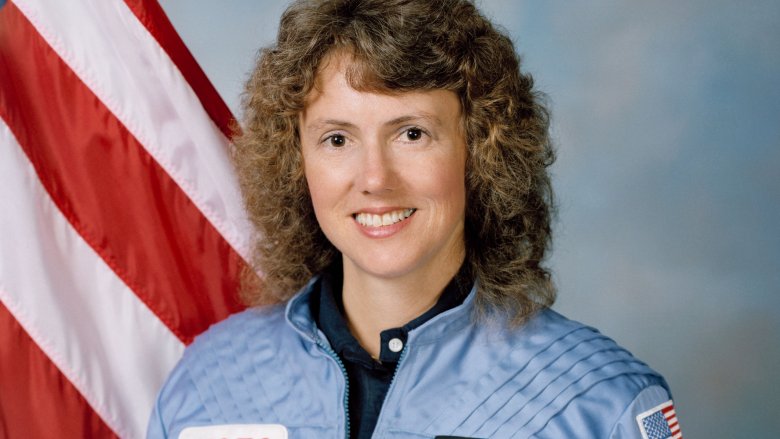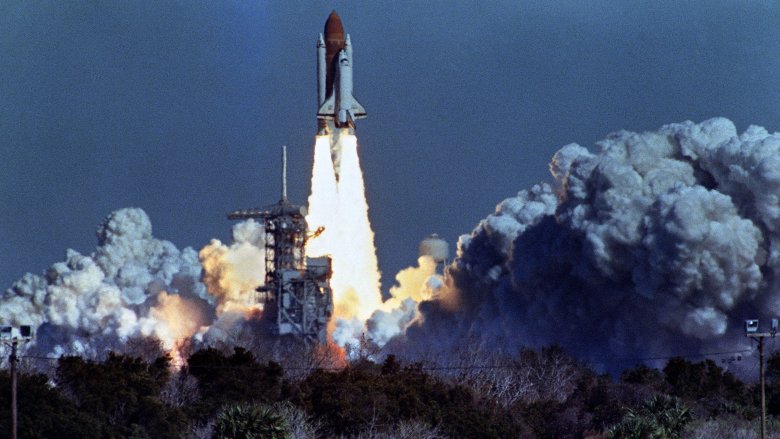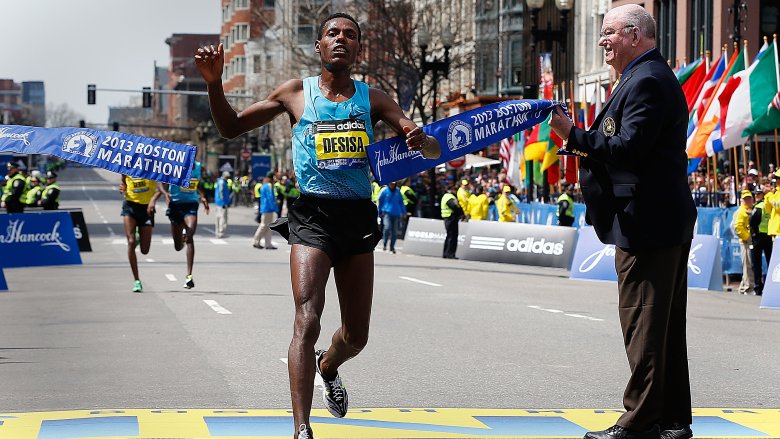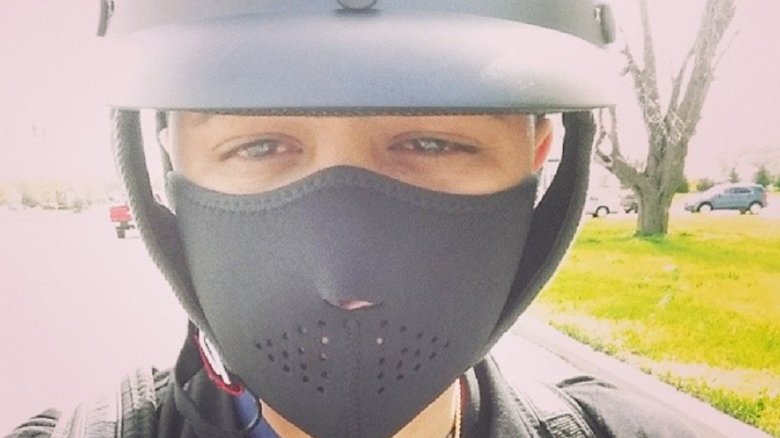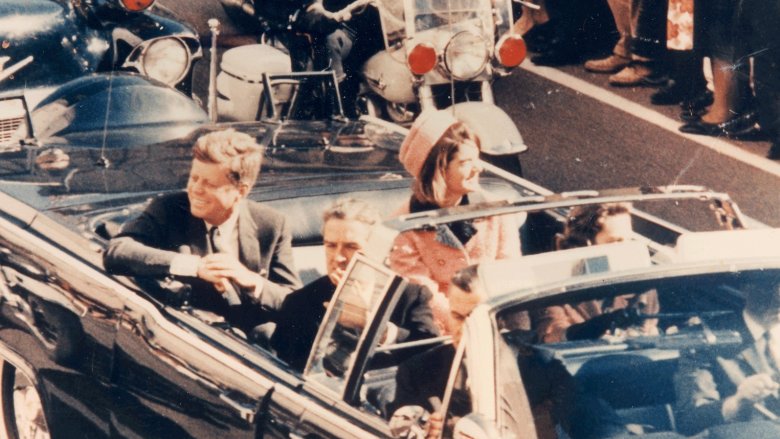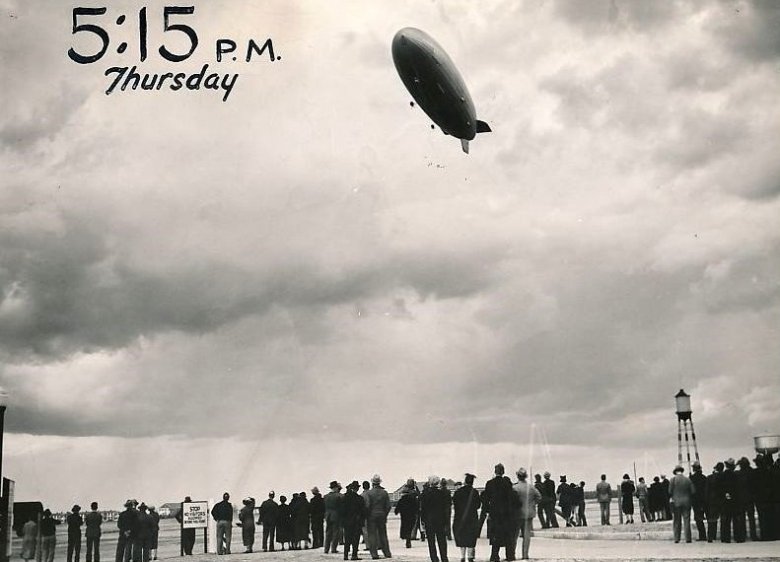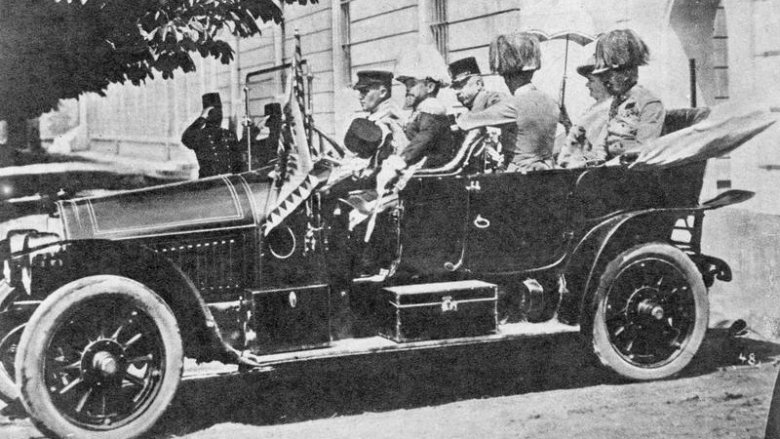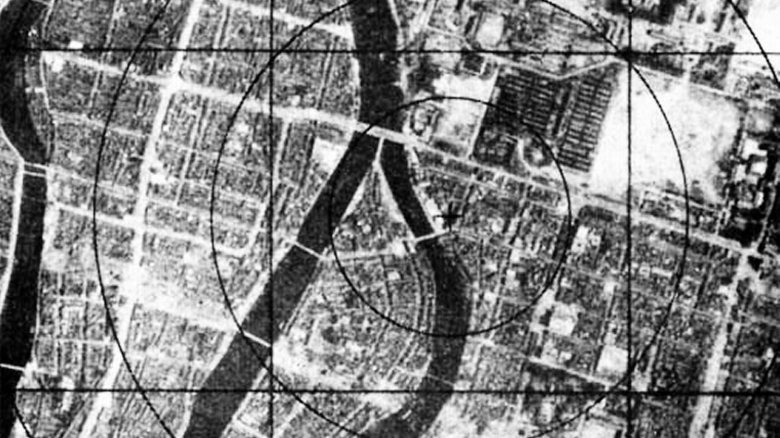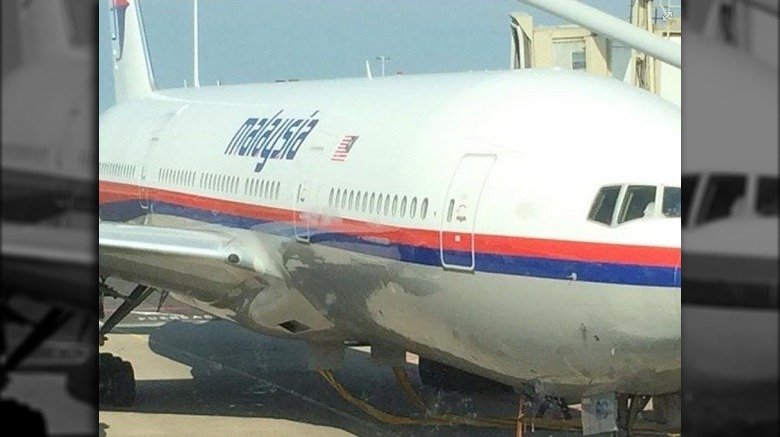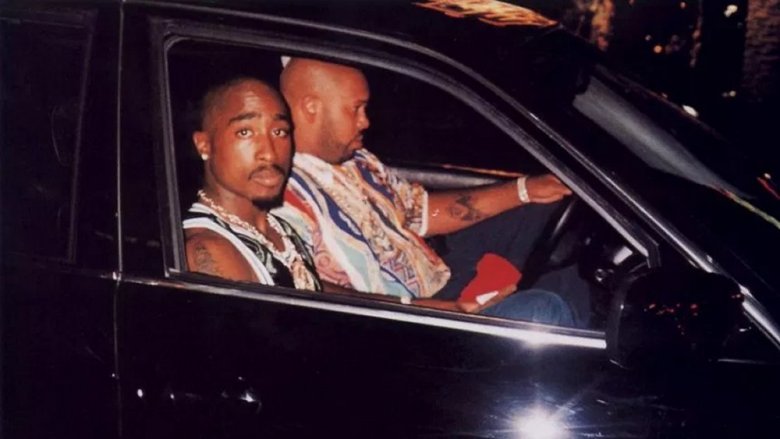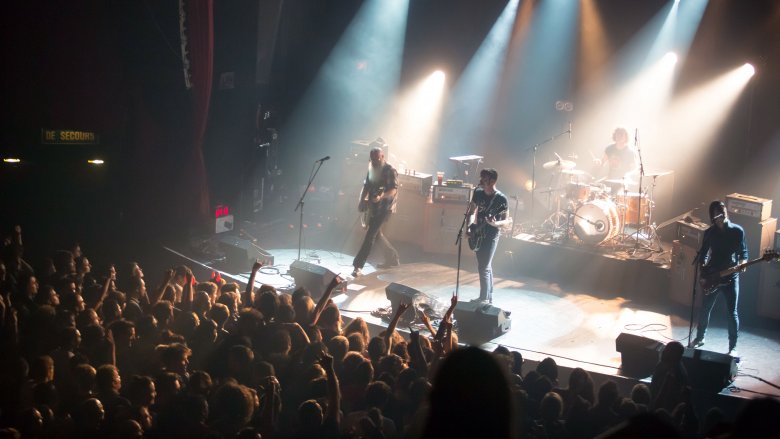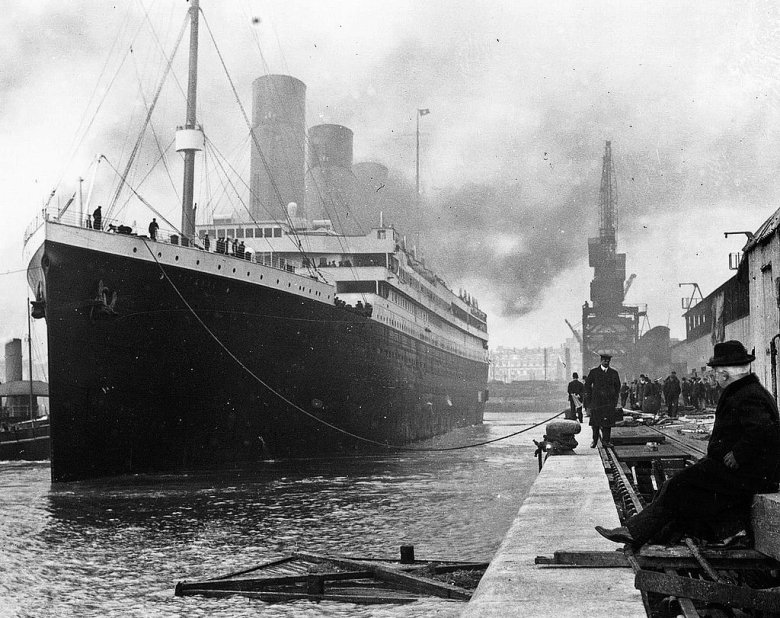Chilling Photos Showing Moments Right Before Terrifying Events
You can't possibly know when you're seconds away from being part of a historical catastrophe. Many of the most frightening incidents of the last century have happened without warning, seemingly spontaneously. These sorts of events — accidental explosions, climate eruptions, mass shootings, or assassinations — have wrecked property, destroyed human lives, and permanently scarred a page of the history book. Once the nightmare begins, it becomes hard to remember those precious moments of life, love, and happiness that existed right before the terrifying thing occurred.
But these moments, and photos of them, should be remembered because they matter. By remembering the hours, minutes, or seconds before something terrible happened, it helps us to also remember the human cost of these tragedies, to recognize the real lives that were damaged. When these horrifying incidents occur, they occur to friends having a coffee, families boarding airplanes, couples attending a concert. Tragedy doesn't happen in a vacuum, and in one split second, lives can forever change.
Challenger, 72 seconds before exploding
In the aerospace world, the name "Challenger" brings back painful memories of January 28, 1986, when the legacy of one of NASA's proudest space shuttles was forever tarnished. Before that day, as Space.com explains, Challenger was known for being the second space shuttle to reach the stars, a feat it had one-upped by taking nine successful trips to space and back, making it a cosmic veteran. But on that one fateful January morning, Challenger took off on its final flight. Less than two minutes later, the shuttle exploded in midair, killing all seven crew members — including civilian schoolteacher Christa McAuliffe (pictured previously), who had planned to teach her students from space.
The photo above shows Challenger shooting up into the sky, as the world watches, a mere 72 seconds before it exploded. This unforgettable tragedy forever changed the space shuttle program in many ways, and every January, NASA now holds a special "Day of Remembrance" to look back on those lost in the Challenger explosion, as well as others who have died during space missions.
Lelisa Desisa wins the Boston Marathon two hours before it gets bombed
The athlete pictured above is Ethiopian runner Lelisa Desisa, captured in history as he won the Boston Marathon, on April 15, 2013. After endless training, warm-ups, and over two hours of running in this time-honored New England event, Desisa won the medal he'd worked so hard for. But just two hours later, according to the New York Times, two bombs exploded at the same finish line Desisa had so victoriously crossed. Three people in the audience were killed, including an 8-year-old, and almost 300 more were badly injured.
In the years afterward, Desisa reached out to the city of Boston. The New York Times says in June 2013 he returned his winning medal to the city in a public ceremony, and he also gave his racing bib to a woman who had lost her lower leg in the bombing. In 2015, Desisa ran in the marathon again, winning the medal a second time — and even beating his old time — to the cheers of a roaring, Boston-strong crowd.
Jadiel's final Instagram photo
Ramon Alberto González Adams (better known as Jadiel, or El Tsunami) was a rapper and reggaeton artist originally from Puerto Rico, riding a wave of momentum into the big leagues. Known for both his musical talent and his enthusiasm for life, according to Billboard, Jadiel had been striving to put his art out there since he was a boy. On Saturday, May 27, 2014, Jadiel posted a selfie to Instagram while enjoying himself in Rochester, New York. In the photo, he was wearing his motorcycle helmet and face protector, and he wrote the caption "En la calleniiiiii. #NY" ("on the streets").
According to Latin Times, Jadiel's body was recovered only a few hours later; he died when his motorcycle collided with a car. He was only 27 years old. It's unclear exactly how many minutes might have passed between the photograph and the crash, but it couldn't have been long. After Jadiel's death became public, the reggaeton world mourned the loss of one of its most beloved stars, with fellow artists like Franco the Gorilla and Tito el Bambino expressing their sadness on social media.
John F. Kennedy, smiling on his final car ride
If the blurry video of John F. Kennedy's assassination wasn't already permanently embedded into U.S. culture, then there would be nothing chilling about the photo above. It shows a husband and wife, clearly of some prestige, riding in back of a limo with four others up front. All of them seem to be enjoying the sunny day, the cheering crowds, and the company of one another. Unfortunately, we all know what happened just a few moments later.
At 12:30 p.m., according to History, bullets were fired into the limo, murdering President Kennedy and injuring Texas Governor John Connally. Not long afterward, a man named Lee Harvey Oswald was charged with the crime. Today, we all know this scene by heart — even if the identity, motives, and number of shooters is disputed — but on that sunny day in Texas, none of the people in this photograph had any idea of the tragic event that was about to occur, forever ripping a hole in the American psyche.
The Hindenburg, right before it exploded
There was a time when zeppelins seemed like the airships of the future, but that all ended at 7:20 p.m. on May 6, 1937, when the German LZ 129 Hindenburg burst into flames, according to History. The 800-foot-long vessel was the most luxurious airship of its time, capable of carrying almost 100 passengers. The Hindenburg was powered by 7 million cubic feet of hydrogen, which would prove to be its downfall after a gas leak sent the mighty vessel burning to the ground in minutes. From the ground, about 1,000 people had gathered to watch the zeppelin land, but instead gaped at its catastrophic meltdown. When the Hindenburg went down, it took 36 lives with it.
Not everyone agrees whether the time stamp on the photo above is accurate, but what is confirmed is that the image, taken from the ground in New Jersey, was snapped anywhere from a few hours to a mere 10 minutes before the Hindenburg's downfall. Either way, it was certainly among the last photographs taken before the Hindenburg began its fateful descent.
Archduke Franz Ferdinand, a few minutes before the murder that launched World War I
On June 28, 1914, Archduke Franz Ferdinand — in the backseat, wearing that fluffy peacock-feathered hat — was accompanied by his wife, Sophie Chotek, as they rode through the streets of Sarajevo in an open-topped car. This photograph was taken shortly before a gunshot by 19-year-old assassin Gavrilo Princip stole the Archduke's life, as described by the Telegraph.
Archduke Ferdinand, who was heir to the Austro-Hungarian throne, was not the most popular leader ever. But few could have imagined the horrors that would follow his death. As History explains, the political implications of Ferdinand's assassination rapidly became the catalyst for World War I, a conflict once known as the "War to End All Wars." After June 28, unprecedented global warfare tore open a hole in the fabric of Europe, and even when the Great War was finished, its aftershocks rippled into the even more catastrophic World War II. Historians generally agree that the 20th century's most devastating bloodshed began here, on the day pictured in this photograph.
Hiroshima, right before the bomb dropped
On August 6, 1945, the United States flew the Enola Gay over the Japanese city of Hiroshima, and dropped a 5-ton nuclear bomb nicknamed "Little Boy" on a bunch of civilians. According to History, the immediate impact of the atomic bomb was 4 square miles of devastation, and the immediate deaths of 80,000 Hiroshima citizens. Thousands more deaths followed due to radiation poisoning, and CBS estimates that 90 percent of the city was wiped off the Earth. No man-made weapon had ever produced an impact that was remotely comparable to this level of destruction. The only other nuclear bomb employed in an act of war was Fat Man, which the U.S. dropped on Nagasaki, Japan, three days later. Hopefully, they'll never be used again.
What the image above displays is Hiroshima in those fleeting minutes before it was destroyed: a populated, teeming metropolis of people, schools, hospitals, and homes, just like any other big city in the world. A second picture, taken just after the bomb dropped, shows the same landscape transformed from a thriving city into a blighted desert.
"Should it disappear..."
If you have friends who travel, you've probably seen social media posts about airplanes, tickets, and passports. Classic social media fare. However, there's something especially chilling about the above photo of Malaysia Airlines Flight MH17, which the Washington Post says was posted on Facebook by Cor Pan on July 17, 2014, with the caption (translated) "Should it disappear, this is what it looks like." Most likely, Pan was simply referencing Malaysia Airlines Flight 370, the plane that had infamously gone missing a few months prior. A few hours after he boarded, the unthinkable became true: his very plane was shot down by a missile over eastern Ukraine, killing nearly 300 people aboard. The purpose of this violent act is still debated today. According to the Telegraph, a Dutch investigation concluded the missile had probably been fired by Russian-backed separatists, though the Kremlin offered alternative stories. No matter what the argument or explanation, nothing can bring back the lives that were lost in this pointless tragedy.
Pan wasn't the only person who posted pictures of the ill-fated flight shortly before takeoff. One mother and son posted a selfie of themselves on the plane, according to Mashable. Another young passenger, Regis Crolla, excitedly shared a photo of his boarding passes.
The last photo of Tupac
On the night of September 7, 1996, the legendary rapper and cultural icon Tupac Shakur was murdered in a Las Vegas drive-by shooting when a white Cadillac pulled up next to the car he was riding in and fired off at least a dozen gunshots. One bullet grazed the head of Tupac's driver, Suge Knight, but four hit the rapper himself. Though Tupac had survived attempts on his life before, this particular shooting proved fatal. To this day, no one has been charged with the crime.
Just a few moments before the shooting took place, though, the above photo was taken by an acquaintance named Leonard Jefferson, according to Complex. Jefferson had gotten to know Tupac some years prior and was driving through crowded, bumper-to-bumper traffic down the Las Vegas Strip when he recognized the rapper in the car beside him. The two men had a brief conversation, Jefferson snapped a quick picture, and when traffic picked up, Tupac and Suge Knight drove away. Several minutes later the barrage of gunshots came, tragically ending Tupac's life.
The concert that became a nightmare
As you can see, the band above is rocking out to a crowd of adoring fans. It's a packed venue. A great night. The group, which is named the Eagles of Death Metal — for the record, there's nothing death metal about the rock band — had filled up the Bataclan Theater in Paris with hit songs that the audience knew and recognized.
The night was November 13, 2015. Mere moments after this joyous event, everything changed.
At 9:40 p.m., as the Eagles were playing, CNN reports that three armed gunmen stormed in with assault rifles and opened fire on the crowd. In the ensuing firefight, the French police took down all three men, but the 90 lives lost at the theater can never be reclaimed, and the psychological trauma suffered by the survivors can never be erased. The band members themselves survived the attack, but among those killed was their merchandise manager Nick Alexander, who was only 36 years old. Three months later, the Eagles of Death Metal made a point to return to Paris, according to the New York Times, to pay tribute to those who had been lost. Some attendees wore T-shirts depicting their lost friends and family. Others came on crutches or canes. Psychologists waited on the front steps, to talk to anyone who wanted their help. All around, it was an opportunity for everyone who survived that horrific attack to move on, to push forward, and to finish the concert they had started.
The Titanic, docked before its fateful voyage
Today, the Titanic is commonly remembered for the famous film it inspired, but it's important to recognize that the ship's disastrous end by an iceberg, in the early years of the 20th century, was a monumental tragedy that took countless lives. While people usually focus on the artistic renderings of the great ship sinking, it's quite different to see the serene calmness of the photo above, taken in Southampton, England, in the first week of April 1912. The Titanic was docked in this place for seven days, according to Irish Central. Soon afterward, it took off on the horrifying voyage that would destroy 3,500 sacks of mail, rob 500 Southampton families of a loved one, and take the lives of over 1,500 passengers, according to Business Insider.
Hearing the numbers is one thing, and it's easy to feel distanced from disasters that occurred over a century ago, but seeing the people in this photo puts reality into sharp focus. Notice the size and scale of the Titanic in relation to its surroundings, and see how tiny the people aboard the ship look. In its time, History reports that the Titanic was the largest movable man-made vehicle in the world, and its launch from this same dock soon caused a media blitz, with over 100,000 people standing by to see it depart. None of those crowds, or the people in this picture, had any idea that this grand human achievement would soon become a human tragedy.
